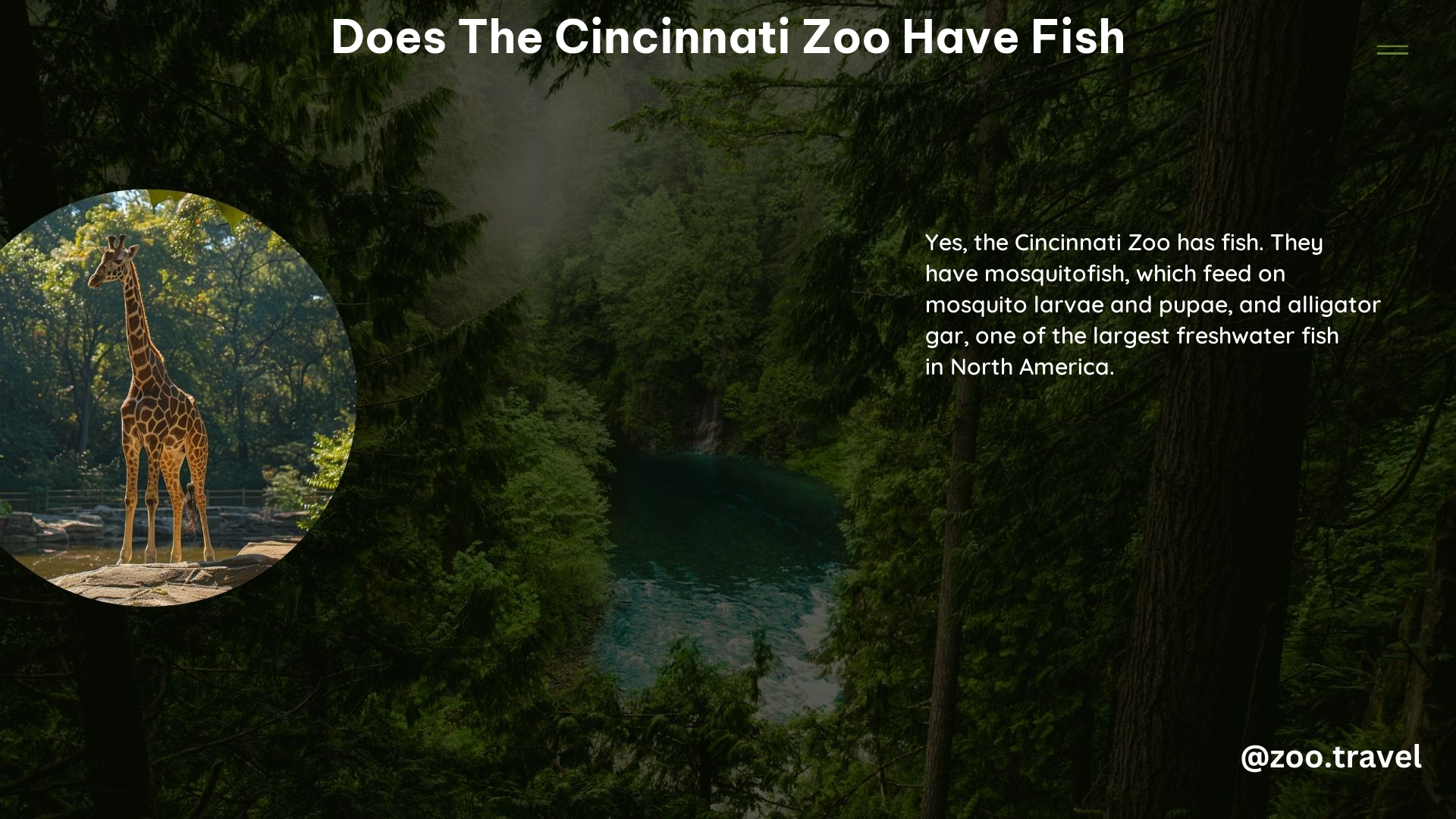Yes, the Cincinnati Zoo does have fish. The zoo features a variety of aquatic species, including some of the largest freshwater fish in North America. From the impressive alligator gar to the mosquitofish that help control mosquito populations, the Cincinnati Zoo offers visitors a chance to explore the fascinating world of aquatic life.
The Alligator Gar: A Prehistoric Predator
One of the most impressive fish at the Cincinnati Zoo is the alligator gar. This prehistoric-looking creature is one of the largest freshwater fish in North America, with some individuals reaching over 8 feet in length and weighing up to 300 pounds. The alligator gar’s distinctive elongated snout and sharp teeth make it a formidable predator, capable of hunting a variety of smaller fish and even small mammals that venture too close to the water’s edge.
The Cincinnati Zoo’s alligator gar exhibit allows visitors to get an up-close look at these fascinating creatures. Visitors can observe the gar’s powerful movements and learn about their unique adaptations, such as their ability to breathe air and their role in maintaining the balance of aquatic ecosystems.
Mosquitofish: Nature’s Mosquito Control

In addition to the alligator gar, the Cincinnati Zoo also features a mosquitofish exhibit. These small, unassuming fish play a crucial role in controlling mosquito populations, making them an important part of the zoo’s conservation efforts.
Mosquitofish, also known as gambusia, are native to the southeastern United States and are known for their voracious appetite for mosquito larvae. By feeding on these larvae, mosquitofish help to reduce the spread of mosquito-borne diseases, such as malaria and Zika virus.
The Cincinnati Zoo’s mosquitofish exhibit allows visitors to learn about the importance of these tiny fish and how they can be used as a natural and sustainable method of mosquito control. Visitors can observe the mosquitofish in action and learn about the zoo’s efforts to promote the use of these fish in local communities.
Sustainable Aquaculture at the Cincinnati Zoo
The Cincinnati Zoo is not just home to a diverse collection of aquatic species; it also employs sustainable farming techniques to support its animal population. One of these techniques is aquaponics, a closed-loop system that combines aquaculture (the raising of aquatic animals) and hydroponics (the cultivation of plants without soil).
In the Cincinnati Zoo’s aquaponics system, fish are raised in a tank, and their waste is used to fertilize the plants that are grown in the same system. This closed-loop system allows the zoo to produce food for its animals in a sustainable and environmentally-friendly way, reducing the need for external resources and minimizing waste.
Visitors to the Cincinnati Zoo can learn about the zoo’s aquaponics system and see it in action. They can observe the fish swimming in the tanks and the plants growing in the hydroponics system, gaining a better understanding of the interconnectedness of these two systems and the importance of sustainable farming practices.
Diverse Aquatic Exhibits at the Cincinnati Zoo
In addition to the alligator gar, mosquitofish, and aquaponics exhibits, the Cincinnati Zoo features a variety of other aquatic exhibits that showcase the diversity of aquatic life.
One such exhibit is the “Gorilla World” exhibit, which features a large, naturalistic gorilla habitat that includes a waterfall and a stream. The stream is home to a variety of fish species, including koi and goldfish, which add to the natural ambiance of the exhibit.
Another exhibit is the “Gorilla World” exhibit, which features a large, naturalistic gorilla habitat that includes a waterfall and a stream. The stream is home to a variety of fish species, including koi and goldfish, which add to the natural ambiance of the exhibit.
The Cincinnati Zoo also has a “Reptile House” exhibit, which features a variety of aquatic reptiles, such as alligators and crocodiles. Visitors can observe these impressive creatures in their natural habitats and learn about the important role they play in aquatic ecosystems.
Conclusion
The Cincinnati Zoo is home to a diverse collection of aquatic species, from the impressive alligator gar to the mosquitofish that help control mosquito populations. The zoo also employs sustainable farming techniques, such as aquaponics, to support its animal population in an environmentally-friendly way.
Visitors to the Cincinnati Zoo can explore the fascinating world of aquatic life and learn about the importance of conservation and sustainable practices. Whether you’re interested in the prehistoric alligator gar or the mosquitofish that play a crucial role in controlling mosquito-borne diseases, the Cincinnati Zoo has something for everyone.
Reference:
– Cincinnati Zoo & Botanical Garden
– Alligator Gar
– Mosquitofish
– Aquaponics
